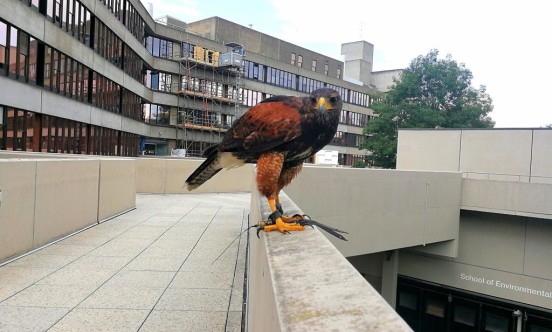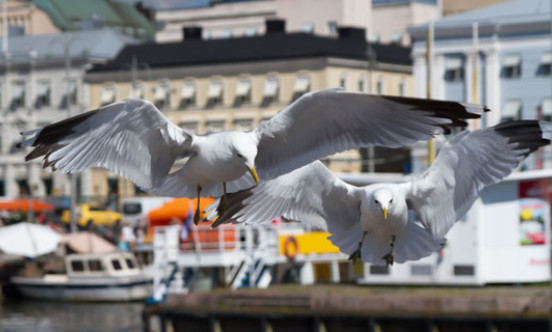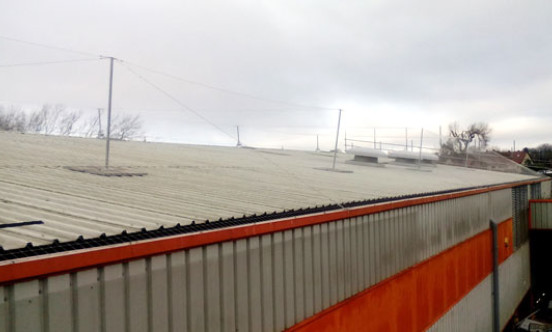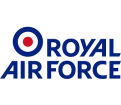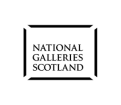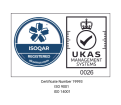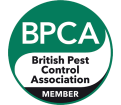
Call 0333 567 2020 for advice and quotes or contact us online
Controlling Kittiwake gulls at Britannia Hotel site
Gallery
Controlling large, dense, noisy Kittiwake gull colonies
Kittiwake gulls are a type of gull that gets their name from the call they use, a shrill ‘kittee-wa-aaake, kitte-wa-aaake’.
They are a coastal breeding bird that gathers in large, dense, noisy colonies. The Kittiwakes at the Grand Hotel would annually nest on the ledges of the hotel – an ideal substitute for their natural habitat – attacking the guests on the balconies and creating an enormous amount of noise and disturbance.
Additionally, health and safety was also an issue due to the fouling mess caused by the birds, which can cause health risks due to bacteria and disease being transmitted to hotel guests and staff. Gull guano also has a damaging effect on a buildings fabric due to its acidic nature; this can lead to higher maintenance and repair costs – not ideal after the hotels restoration!
Project overview
The Grand Hotel Scarborough is a Grade II Listed building situated in Scarborough and owned by Britannia Hotels. The hotel is a beautiful example of Victorian architecture and was one of Europe’s first purpose built large scale hotels. The hotel is distinctive for its locally sourced yellow brickwork, its four towers and picturesque South Bay and harbour sea views. As well as attracting tourists, the hotel had until recently attracted unwanted noisy and messy guests – gulls.
Urban gulls are on the increase in the UK, not only in coastal areas but also inland. Gulls can cause a number of problems such as noise, mess, attacks which could also lead to increased maintenance costs. The intricate Victorian architecture of the hotel offered an abundance of secure nesting places for local gulls. As a result, the entire sea and northerly facing walls of the building became completely engulfed with Kittiwakes, their nests, nest debris and fouling.
Our solution
Gull proofing
Our NBC bird control teams have extensive experience of gull control solutions in every type of environment and for every type of building. At survey it was immediately clear due to the scale of the problem that the most effective method would be gull proofing. This prevents the gulls accessing the hotel balconies, window sills and ledges.
An additional consideration was that the Grand Hotel is a Grade II listed building. In order to preserve the buildings architectural features our North Yorkshire Bird Control team worked in partnership with Scarborough Borough Council on a suitable solution to gain consent for the gull proofing installation.
The fixtures and fittings used for the project needed to be sympathetic and unobtrusive on the building. This would prevent the buildings aesthetics being affected or causing damage to the structure. An additional challenge was that the building is built on a cliff, so use of high access equipment, such as a cherry picker or scaffolding, for the netting installation was not suitable or safe. Access for installations can often be a challenge due to a buildings location or height. Our teams therefore used rope access which in this situation was the safest and effective route to install the gull netting on the hotel.
The nesting time of the Kittiwakes was a further challenge as the work the work had to be split into two parts either side of their nesting period to avoid disturbing the birds illegally.
Why gull netting was the best solution
Gull netting prevents the gulls from accessing the attractive areas on the hotel for nesting and roosting, it’s also ideal for buildings with rooftops or courtyards. It’s a 100% effective solution to prevent gulls adversely affecting the building, staff and customers. Bird netting is also an ideal long term solution and coupled with our maintenance agreement means a worry free future after installation.
If you have a gull problem and need advice, talk to your local NBC team by calling 0333 567 2020.
For further information read our article "How to get rid of Seagulls".
